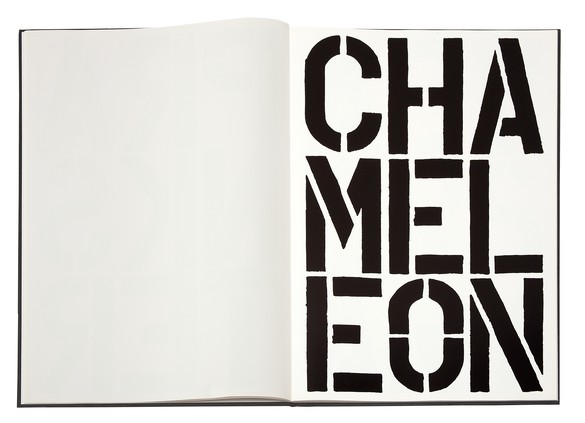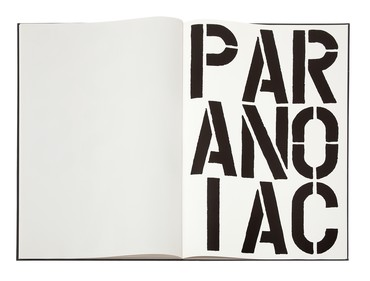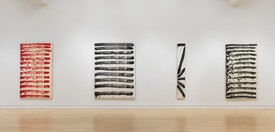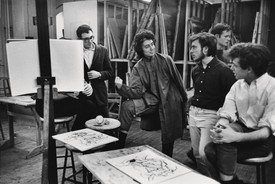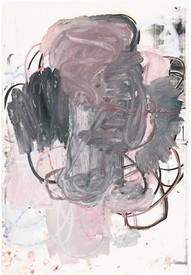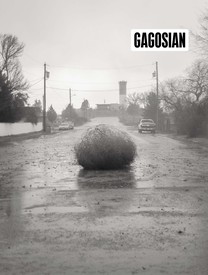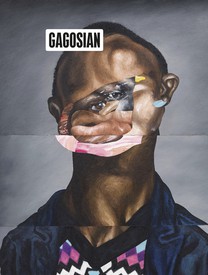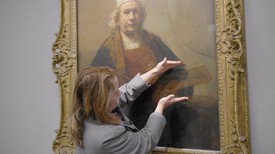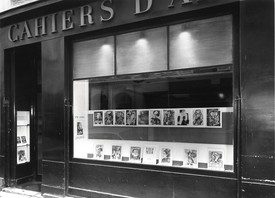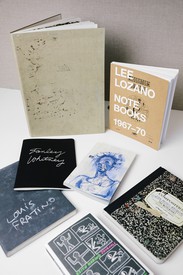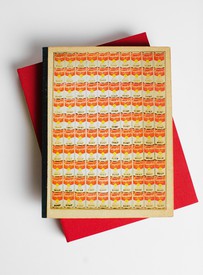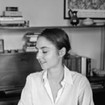
Anna Heyward is a writer and editor in New York. Her work has appeared in The New York Times, The New Yorker, Vogue, and The Paris Review Daily, among others.
Black Book exemplifies Christopher Wool’s use of the typographical word as a pictorial image. It is an oversized object, roughly twenty-three inches tall, and contains forty pages bearing seventeen reproductions of enamel drawings. Jet-black paper covers the boards that bind it. Each page of the book contains a single word, inscribed like a large-scale code:
ASSASSIN
ASSISTANT
CELEBRITY
HYPNOTIST
HYPOCRITE
INFORMANT
MERCENARY
PARANOIAC
Published in 1989, Black Book marks a moment when Wool’s work stirred the New York art scene. His bold and rebellious word paintings have since become canonical: white canvases in which stenciled all-capital black letters spell out phrases like “sell the house sell the car sell the kids.” The planar use of the word as a painterly method has come to symbolize Wool’s stark energy. These works typify a brash, generative moment that resonates still.
The drawings reproduced in Black Book have been exhibited in their own right, notably in 2013, as part of the most comprehensive examination of Wool’s career to date, organized by New York’s Guggenheim Museum and traveling through 2014 to The Art Institute of Chicago. Transposed into an artist’s book, they suggest at least as many layers and diverted streams of information as Wool’s word paintings do. They also index, without conforming to, a crowd of artistic cultures: street art, Conceptual art, Pop. The text-based work finds a paradigmatic and tactile expression in this distributive format. Black Book is printed on smooth wove paper in an edition of 350, each copy being signed and numbered by Wool on the colophon. The book was co-published by Thea Westreich, New York, and Gisela Capitain, Cologne, and produced by Studley Press, in Massachusetts. Westreich and her husband, Ethan Wagner, who have published artist’s books since the late 1980s, are noted collectors of Wool’s work.
In the winter of 2017, Wool and a co-curator, Katy Siegel, mounted the exhibition Painting Paintings (David Reed) 1975 at Gagosian at 980 Madison Avenue. As a young artist, Wool had seen these paintings of Reed’s when they were first exhibited, at New York’s Susan Caldwell Gallery in 1975, and they had marked him deeply. In part he was struck by the similarities between Reed’s marks and Western writing conventions, since Reed had applied his wet-into-wet brushstrokes from left to right, top to bottom, as though applying script to a page. In this way the works share a lineage with Cy Twombly’s blackboard paintings of the mid-1960s. Revisited forty years later, these paintings of Reed’s, which have a lilting, narrative quality even in their abstraction, invite an approach to Wool’s word works through the themes of artistic progeny and cyclical exchange.
Artwork © Christopher Wool; photos: Rob McKeever
